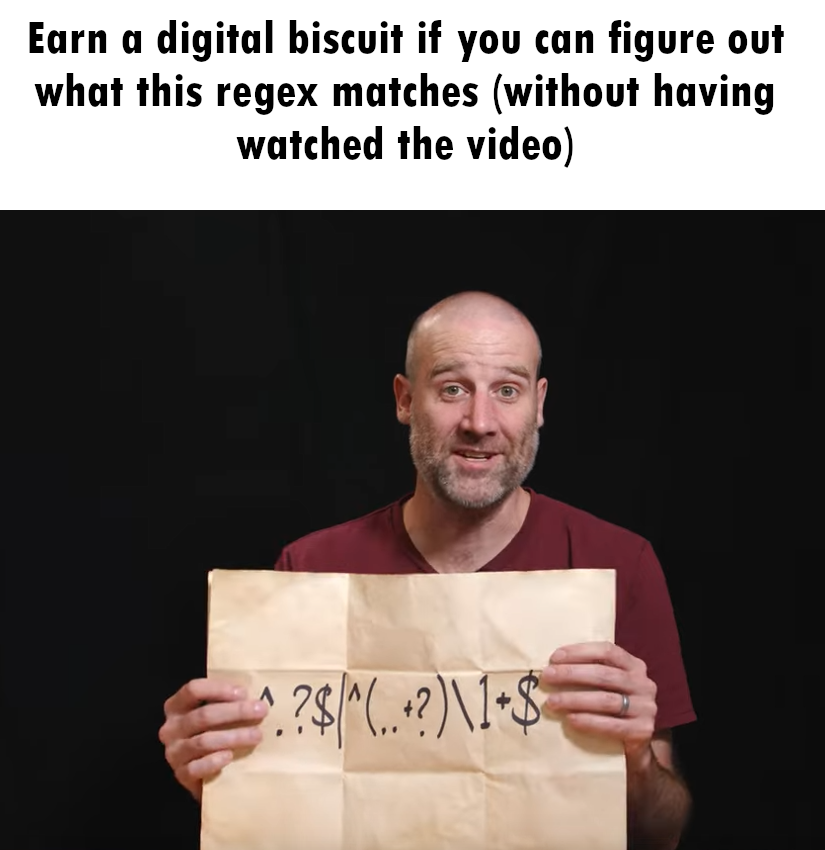this post was submitted on 31 Oct 2024
330 points (97.1% liked)
Programmer Humor
32472 readers
992 users here now
Post funny things about programming here! (Or just rant about your favourite programming language.)
Rules:
- Posts must be relevant to programming, programmers, or computer science.
- No NSFW content.
- Jokes must be in good taste. No hate speech, bigotry, etc.
founded 5 years ago
MODERATORS
you are viewing a single comment's thread
view the rest of the comments
view the rest of the comments

So, here's my attempt
The first portion (
^.?$) matches all lines of 0 or 1 characters.The second portion (
^(..+?)\1+$) is more complicated:(..+?)is a capture group that matches the first character in any line, followed by a smallest possible non-zero number of characters such that (2) still matches (note that the minimum length of this match is 2)\1+matches as many as possible (and more than 0) repeats of the (1) groupI think what this does is match any line consisting of a single character with the length
1(due to the note in (1), so that the repeating portion has to be at least 2 characters long), orTherefore, combined with the first portion, it matches all lines of the same character whose lengths are composite (non-prime) numbers? (it will also match any line of length 1, and all lines consisting of the same string repeated more than one time)
So this is a definite example of "regex" that's not regular, then. I really don't think there's any finite state machine that can track every possible number of string repeats separately.
You can have states point to each other in a loop, no?
If the set of all strings of composite length is a regular language, you can use that to prove the set of all strings of prime length are also a regular language.
But it's also easy to prove that the set of language of strings of prime length is not regular, and thus the language of strings of composite length also can't be regular.
A more formal proof.
Thank you for this. I'll review this when I can.
Yeah, but in an FSM all you have are states. To do it the obvious way, you need a loop with separate branches for every number greater than 2, or at the very least every prime number, and that's not going to be finite.